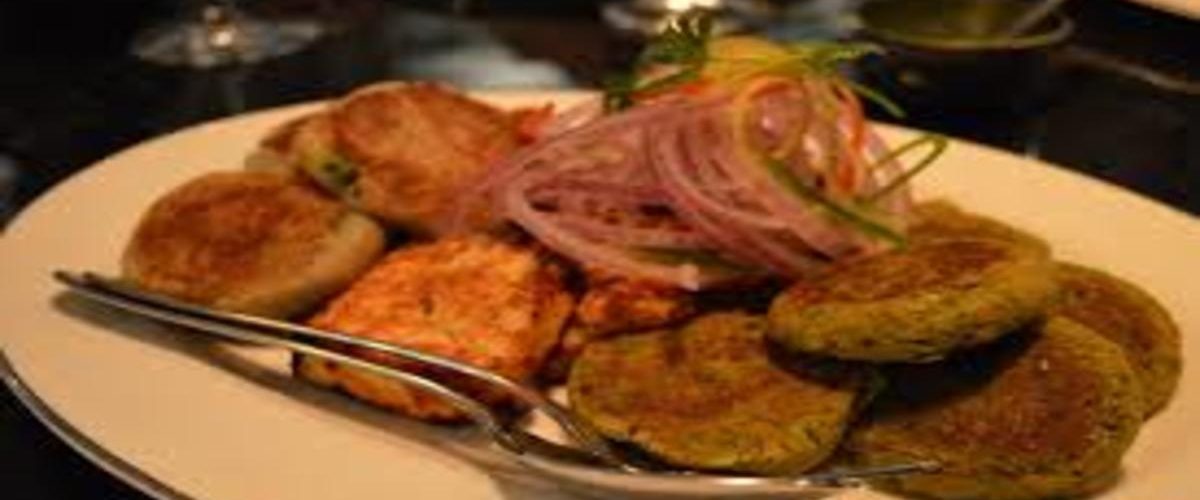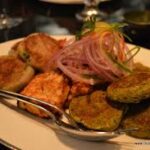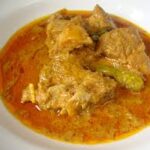Awdhi Cuisine




Awadhi cuisine includes both vegetarian and non-vegetarian delights prepared in exotic spices and garnished with dry fruits. This cuisine was introduced by the deputies of the Mughal Emperor, namely, the Nawabs of Awadh, who were inhabitants of Persia (modern day Iran ) and were used to a particular diet which comprised of grains, fruits, dry fruits and vegetables that were available in that country, apart from meat in various forms.
The Mughlai style of cooking was further refined by the Nawabs by adding exotic flavours of saffron and dry fruits. The Murgh Mussallam is a typical example of Persian flavours merged with the Awadhi style of cooking. So is also the case with kababs. Originally, they were simply pieces of meat roasted over fire, called boti kababs. Later, innovations were brought about in Awadh and the Shaami kababs, Galauti kababs, Kakori kababs, etc., were born out of innovations and improvisations. Saffron was available in plenty in Persia and so, even the rice was flavoured with this spice. So is the case with sweet preparations, as saffron not only added colour, but it enhanced the flavour of the dessert too.
The generous use of dry fruits in Awadhi cuisine is another gift from Persia, as a wide variety of dry fruits were available, like anardana (dried pomegranate seeds), khubani (apricots), figs, pistachios, almonds and different varieties of currants, to name just a few. Dry fruits in the dishes symbolized prosperity and were a sign of opulence and royalty. The Chefs of Awadh transformed the traditional dastarkhwan (ceremonial dining spread) with elaborate dishes like kababs, kormas, kaliya, nahari-kulchas, zarda, sheermal, roomali rotis, parathas etc. Awadhi cooking improvised and flourished after the capital was shifted from Faizabad to Lucknow as the successive Nawabs who ruled the province were connoisseurs of good food and fond of holding ‘daawats’ (feasts). The Lucknow dastarkhwan would not be complete unless it had the following dishes. Qorma (braised meat in thick and rich gravy), Salan (a gravy dish of meat or vegetable), Qeema (minced meat), kababs (pounded meat fried or roasted over a charcoal fire), Bhujia (cooked vegetables), Dal, Pasanda (fried slivers of very tender meat, usually kid lamb, in gravy). Rice is cooked with meat in the form of a Pulao, Chulao (fried rice) or served plain.
There would also be a variety of breads. Desserts comprised Gullati (rice pudding), Kheer (milk sweetened and boiled with whole rice to a thick consistency), Sheer Birinj, (a rich, sweet rice dish boiled in milk), Muzaaffar (vermicelli fried in ghee and garnished with saffron). The Awadhi menu changes with each season and is unique to the festivals which mark the month. The severity of winters is fought with rich food. Paya (trotters) are cooked overnight over a slow fire and the ‘shorba’ (thick gravy) eaten with Kulcha or Khameeri roti. Awadhi Cuisine is more of an art that can be perfected by practice and a bent towards improvisation and innovation. Sure this is a complex cuisine that has survived the winds of change and no other cuisine has had a larger measure of love and loyalty from its citizens than the people of Lucknow.